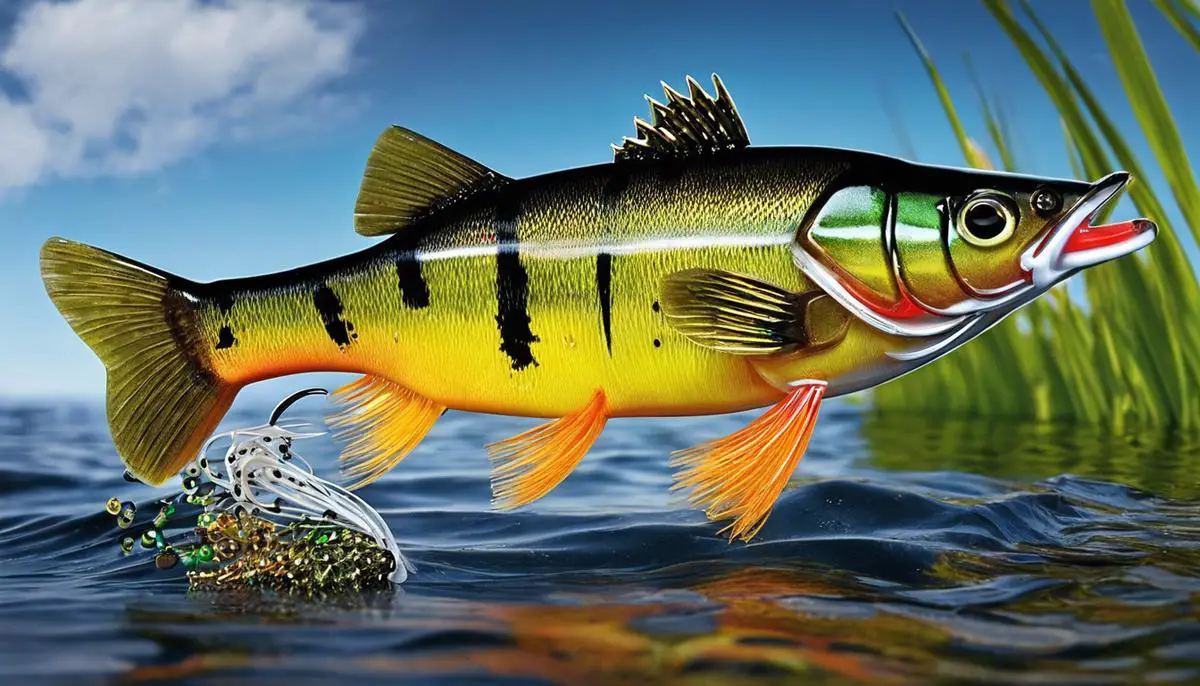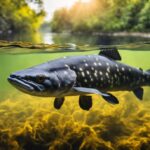Embarking on the quest to outsmart the elusive walleye can often feel like a thrilling game of underwater chess. With its keen senses and discerning appetite, the walleye presents a fascinating challenge to anglers. One key strategy in this aquatic game lies in the careful selection of bait. In a compelling blend of science and tactic, understanding the walleye’s natural preferences provides invaluable insight into their world. By examining the walleye’s favored menu in their aquatic habitat, this exploration delves into tailoring our approach to entice these sharp-eyed predators with the most tempting offerings, whether they be crafty artificial imitations or the seductive sway of live bait.
Understanding Walleye Preferences
Walleye Diet 101: What Do These Elusive Fish Feast On?
Unlock the Culinary Preferences of the Elusive Walleye
Embarking on a fishing adventure targeting walleye means understanding their palate. These sought-after freshwater fish have a menu that’s as intriguing as their elusive nature. Let’s delve into the primary diet preferences of walleye to enhance your next fishing experience.
Understanding the Walleye’s Menu
The walleye, with its distinctive eye shine, is a predator with a diet as varied as the waters it inhabits. Recognized for their exceptional taste, walleyes also have a preference for certain prey that makes them a thrilling challenge for anglers.
Preferred Prey for Peak Performance
Youth Walleye Preferences: Starting small, young walleye typically feast on plankton and insects. This buffet of small critters provides them with the nutrients necessary for rapid growth.
Transition to Larger Prey: As they grow, walleye graduate to a more robust diet. Moving up the food chain, they target minnows and other small fish prolific in freshwater environments.
Adult Walleye Delicacies: Adult walleye are the connoisseurs of freshwater predators. They prefer yellow perch, but don’t shy away from snacking on other fish such as crayfish, worms, and even smaller walleye. It’s a fish-eat-fish world, and the walleye reigns supreme.
Seasonal Dining Habits: Walleye are opportunistic, and their choices can change with the seasons. Spring might find them pursuing shad and other baitfish, while summer often sees a preference for deeper-dwelling fish as they try to escape the heat.
Mastering the Bait Game
Effective Lures and Bait: When it comes to fishing for walleye, match the hatch. Use lures and bait that mimic their natural diet. Soft plastics, crankbaits, and spinner rigs are excellent tools that imitate the swift, darting movements of small fish.
Location and Timing: Be in tune with the waterbody you’re fishing. Walleye location shifts with their prey — shallow during spawn, deeper as temperatures rise. Additionally, timing is crucial. They’re known to be most active during dawn and dusk, capitalizing on their superior low-light vision.
Understanding a walleye’s dietary preferences equips any angler with the knowledge to make smart choices on the water. By mimicking their natural food sources and adapting to their feeding habits, you increase the odds of a successful catch. Since walleye do not limit their diet to one specific type of prey, the versatility in your approach can make all the difference. Paddle out there, cast your line, and enjoy the unique dance between predator and angler.

Selecting Artificial Lures
Selecting the Right Artificial Lures for Walleye Fishing Success
Anglers looking to hook walleye will find that the type of lure used can make a significant impact on their fishing outcomes. By choosing lures that resemble the walleye’s natural prey, you increase your chances of attracting these clever fish. Now, let’s delve into the world of artificial lures and discover which ones are known to entice walleye most effectively.
Jigs: The Go-To Lure
The jig is a stalwart amongst walleye lures for good reason. Its versatility allows you to mimic a variety of prey, from minnows to crawlers, depending on how you dress it. A simple tactic is to start with a lead head jig and equip it with a plastic body shaped like a fish or worm. The use of jigs with lifelike movement in their tails can be particularly persuasive. Use a variety of colors such as chartreuse, orange, or white, and adjust based on water clarity and available light. Remember, the key to jigging lies in the twitch of your rod tip, which gives it a tantalizing darting motion.
Crankbaits: Covering More Water
Crankbaits shine when you need to cover a lot of water and elicit reactionary strikes from walleye. Designed to dive and wobble, they come in various shapes and sizes that echo the look of a baitfish. When choosing a crankbait, pay attention to its diving depth to ensure it coincides with the depths where walleye are suspending or feeding. Natural colors that imitate perch or shad are typically effective, although brighter hues can be advantageous in murkier waters or during dim light conditions.
Spinner Rigs: The Flash and Vibration Advantage
Spinner rigs are another excellent choice for enticing walleye, with their blades providing both flash and vibration in the water. Paired with a live bait such as a nightcrawler or minnow, they become irresistible. Trolling spinner rigs along drop-offs or over weed beds can be a highly productive technique as the spinning action calls to the predatory instincts of walleye. Be sure to adjust your trolling speed to ensure the spinners are moving optimally, not spinning too quickly or hanging motionless.
Soft Plastics: The Realistic Touch
Soft plastic lures offer realism that can make the difference on a tough day. These lures come in a vast array of shapes, emulating virtually every type of walleye snack from minnows to leeches. Rig them on a jig head or use them with a spinner rig for added attraction. The soft, lifelike texture can encourage walleye to hold onto the lure longer, giving you that extra moment to set the hook.
Suspending Baits: The Subtle Approach
When walleye are less aggressive, suspending baits can be the ticket to success. These lures stay at a certain depth when you stop reeling, tempting walleye that are more interested in a leisurely chase. Suspending baits often imitate a wounded baitfish—an easy target for a cautious walleye. The tactic here is to cast out, then employ a retrieve-and-pause technique, allowing the lure to hang temptingly in the strike zone.
In Conclusion
The efficiency of any artificial lure for walleye can depend on various factors such as water conditions, time of day, and season. Always be adaptable and willing to change tactics and lures throughout your fishing expedition. By experimenting with jigs, crankbaits, spinner rigs, soft plastics, and suspending baits, you’ll soon discover which lures bring the best results in your local waters. Keep these tips in hand, and you’ll be well on your way to mastering the art of walleye fishing with artificial lures.

Choosing Live Bait
Live Bait Strategies for Hooking Walleye
Dive Deeper with Natural Attractants: The Live Bait Edge
To elevate the walleye fishing experience, incorporating live bait is a savvy move that can tip the scales in favor of the angler. Effectively utilizing live bait not only appeals to the inherent predatory instincts of walleye but also offers a realistic presentation that often proves irresistible to these keen-eyed hunters.
Make a Match with Mother Nature: Live Bait Selection
Knowing the walleye’s preference for a hearty meal is essential when selecting live bait. Live bait options that mirror natural prey include nightcrawlers, leeches, and minnows, each one serving as a ready-made lure with the added bonus of real movement and scent.
Nightcrawlers: The Wiggly Tempters
A staple in the walleye’s diet, nightcrawlers offer an undulating dance that’s hard for the fish to ignore. Hooking a nightcrawler properly ensures it moves naturally in the water, creating an appetizing display. Thread the worm onto the hook with enough slack to allow for its seductive squirm.
Minnows: The Thrashing Beacon
Minnows are the go-to live bait for imitating the walleye’s natural prey. Hooking a minnow through its back just behind the dorsal fin or through the lips allows it to swim with fervor, sending out distress signals that walleye find hard to pass up.
Leeches: The Underrated Enticer
Leeches provide a unique action with their stretching and coiling. A hook through the sucker end will allow the leech to move freely and naturally, presenting a tantalizing target for walleye especially on calmer days when subtle movements are key.
Seasons and Sensitivity: Matching the Bait to the Time
Walleye appetites ebb and flow with the seasons, and so should the choice of live bait. For example, during the spawn, when walleyes are more aggressive, a frisky minnow can be the ticket. In contrast, during the slower summer months, a juicy nightcrawler can be more appealing due to its easy catchability.
Rigging Right for Results
When rigging live bait, the right setup is crucial for walleye fishing. Slip sinker rigs allow live bait to meander enticingly with minimal weight, ideal for a finesse approach. When more movement is required, a float setup keeps bait off the bottom and adds a visual strike indicator for the angler.
React and Respond: The Art of Presentation
Presenting live bait to walleye demands an intuitive touch – it’s about reading the conditions and responding accordingly. A stealthy, natural approach often works best. Cast the bait gently into walleye habitats, near structures or drop-offs, and allow it to drift or slowly reel it in for an enticing display.
Proactive Patience: Wait for the Walleye
Walleye can be wary, and sometimes the waiting game is necessary. Patience is rewarded when live bait is given time to work its charm. The key is to wait for that telltale tug on the line, signaling a walleye has taken the bait before setting the hook with a firm, but not overly aggressive, action.
In Conclusion: The Natural Advantage
In the pursuit of walleye, the edge often belongs to those who leverage the magnetic allure of live bait. By presenting a menu that reflects the walleye’s natural diet, adjusting to the rhythms of their seasonal changes, and mastering the subtleties of rigging and presentation, anglers can enhance their chances of success on the water. Remember, fishing is not just about the catch; it’s the synergy of knowledge, environment, and the thrill of connecting with nature. With live bait, every cast has the potential to become a story of craft and cunning – the essence of fishing for the elusive walleye.
[
Walleye fishing is an art that marries patience with knowledge, and the right bait is the masterstroke that can turn a quiet day on the water into one of triumphant catches. Through recognizing the walleye’s dietary proclivities and meticulously selecting the proper bait, anglers can tip the scales in their favor. Armed with an array of lures and live bait, matched with the skillful art of presentation, enthusiasts of the sport are now better equipped to welcome the golden flash of success. The enigmatic walleye may swim in the depths, but the keys to unlocking their pursuit are now at the surface for the well-informed angler.



Welcome to our blog!